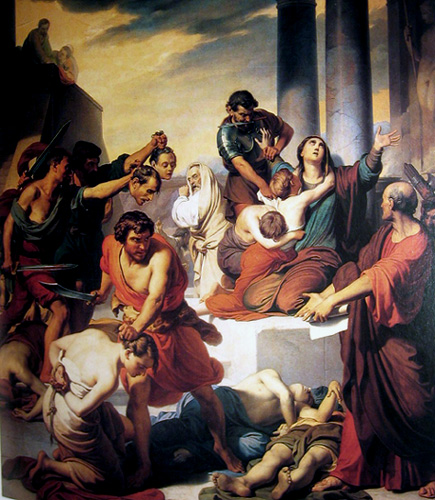Further to my post yesterday on the sale of the skull of St Vitalis, more information is emerging, and I'm afraid it's not good. This affair just gets seedier the more we go on.
In an interview on Irish radio yesterday the auctioneer said that the head had been bought by a Hollywood actor who wanted it for the "shock value". This actor bought the head for €3,500, even though much higher bids were made - our bid was higher than this, and there was another much higher again at €10,000. The auctioneer admitted that these bids, from Irish bidders, were excluded from the auction because the owners wanted the head to go out of Ireland. Now this is very odd given that they opted to put the head up for sale in an open auction in Ireland. At the very least this is very strange and merits, perhaps, a more official investigation into how the auction was conducted. I am not an expert on codes of behaviour for auctioneers, but I do get a fishy smell here.
Apart from that I am deeply disturbed about the whole thing. That the probable relic of a Saint was bought for its "shock value", the media interest, and even the auctioneer's own attitude on national radio, all of this is offensive not only to Catholics as we see the possible remains of one of our martyrs disparaged and traded as if mere consumer objects, but even on a human level that the earthly remains of a human being should become an object for such derision is offensive. That an actor should be the one to buy it for a lark is also sad - when I heard I was reminded why our Fraternity was founded - another actor that needs our prayers.
I suppose it must be prayers all round: the actor, the auctioneer, the family who sold it, the media leading the derision. As a friend pointed out to me yesterday: "God will not be mocked" - and he won't. So we will have to pray and leave things in the hands of God.
Reflecting on this whole affair, I suppose we should not be surprised that the secular world should be so callous when it comes to the most cherished treasures of the Church. Following Vatican II thousands of relics were unceremoniously dumped, many rare ones being lost forever. Some were buried, but others, unfortunately, were thrown into bins and rubbish skips. I know of one situation where the sisters of a congregation had to relinquish their personal relics so they could all be disposed of. If the Church and her representatives should treat relics with such contempt, why are we surprised when ignorant secularists do the same - at least they buy them to show them off to their friends - "shock value" is not as bad as pure contempt and embarrassment.
Thankfully in recent years, a new generation is rediscovering the significance of relics and the Church is trying to clamp down on the sale and abuse of them. Relics, for us as Catholics, are cherished mementos of Our Lord and our saintly heroes. They do not possess magical powers and we do not worship them: we venerate them as holy things. We are not alone in this: the Buddhists preserve relics of Buddha and venerate them, and some Muslims honour the relics of their heroes - objects which belonged to Muhammad are held in great esteem by his followers (I wonder would the auctioneer have dealt with a relic of Muhammad in the same way as the head of St Vitalis - if he did he would now be in hiding). Relics for us Catholics serve as reminders of the Saint or Blessed's presence. If they are first class (pieces of the person's body or hair), we venerate the sacred remains as at their tomb, the remains of one who has become holy and who now stands in the presence of God. They must always be treated with the utmost respect.
The sale of the skull of St Vitalis gives the impression that relics can be owned - they can't. Those who have relics of a Saint or Blessed are no more than custodians for a time, and they have a duty to ensure that when they die, or if they give them as gifts, that they go to reliable people, or, even better, they go back to the Church, diocese or religious family from which they came. So if you have relics you must be very careful and ensure they do not fall into the wrong hands. By and large, to ensure this, the Church and many religious families will now only give first class relics to churches and members of the clergy. This will also fulfil the requirement that they be used for the veneration of the faithful. So if you have relics, make provision for them in your will.
If we learn anything from this sordid affair of the head of St Vitalis, is for us Catholics to be more protective of our holy things - how the Eucharist is treated is far worse than that dished out to relics. We should use this situation as one which will lead us to a greater devotion, a deeper living of our faith. And we must also learn to pray more, especially for those who make little of holy things.








